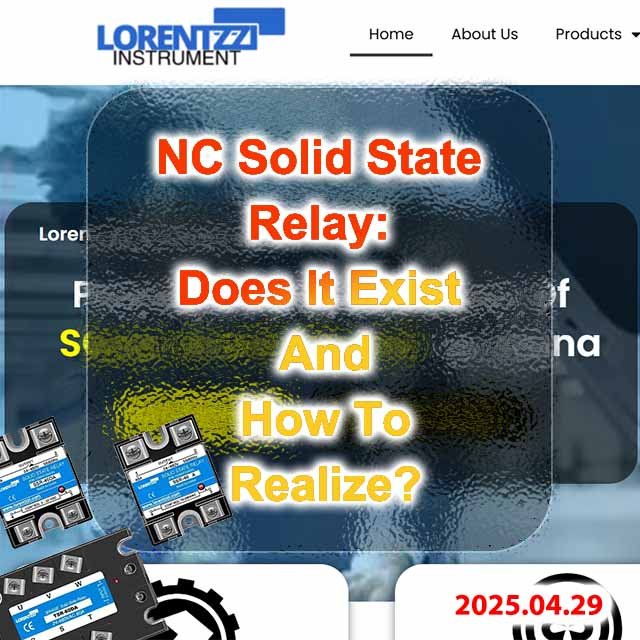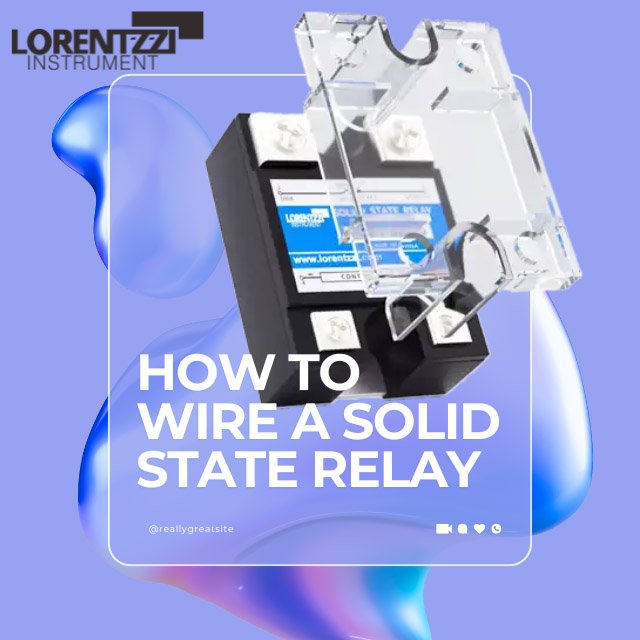Czy zauważyłeś, że wszystkie przekaźniki półprzewodnikowe Przekaźniki półprzewodnikowe dostępne na rynku są normalnie otwartymi przełącznikami stykowymi, jeśli można je sklasyfikować według różnych styków, takich jak przełączniki elektromagnetyczne (oczywiście ta metoda klasyfikacji nie jest naukowa, ponieważ przekaźniki półprzewodnikowe są przełącznikami półprzewodnikowymi).
Można się zastanawiać, czy istnieją normalnie zamknięte przekaźniki półprzewodnikowe? Jeśli nie, to jak można osiągnąć tę funkcję? W tym artykule przedstawimy szczegółowe wyjaśnienie, a także niezawodne rozwiązanie. Zacznijmy więc.
Co to jest przekaźnik półprzewodnikowy NC?

Przekaźnik półprzewodnikowy NC jest przełącznikiem półprzewodnikowym jak zwykły SSR, ale jego styk jest normalnie zamknięty. Ich zasada działania jest następująca: gdy nie jest stosowany żaden sygnał sterujący, obciążenie jest zawsze włączone; gdy stosowany jest sygnał sterujący, obciążenie jest wyłączone.
Teraz, gdy normalnie zamknięty przekaźnik półprzewodnikowy działa bardzo podobnie do przekaźnika elektromagnetycznego z normalnie zamkniętymi stykami, ale czy istnieje? Dlaczego nie widzimy go w otwartej sprzedaży na rynku? W dalszej części wyjaśnię dlaczego.
Czy istnieją przekaźniki półprzewodnikowe NC i dlaczego?
W rzeczywistości normalnie zamknięte przekaźniki półprzewodnikowe nie są zbyt powszechne. Dlaczego tak się dzieje? Możemy zacząć od przestudiowania komponentów przekaźników półprzewodnikowych. Jak wspomnieliśmy w poprzednie blogi, Obwód wyjściowy przekaźnika półprzewodnikowego jest zbudowany wokół tyrystora w przekaźniku półprzewodnikowym z wyjściem AC lub MOSFET w przekaźniku półprzewodnikowym z wyjściem DC.
Koncepcja normalnie zamkniętego przekaźnika półprzewodnikowego (SSR) oznacza, że ma on normalnie zamknięte styki podobne do przekaźnika elektromagnetycznego. Z powyższego można wywnioskować, że normalnie zamknięte styki są realizowane przez jego elementy (tyrystory lub tranzystory MOSFET). Prowadzi to do pytania: Czy normalnie zamknięte tyrystory lub tranzystory MOSFET istnieją?
W rzeczywistości nie istnieją normalnie zamknięte tyrystory lub tranzystory MOSFET. Jednak przy użyciu zewnętrznych obwodów lub komponentów nadal możliwe jest zbudowanie normalnie zamkniętego przekaźnika półprzewodnikowego. Jak? W następnej sekcji dowiesz się, jak to zrobić.
Jak zrealizować funkcję normalnie zamkniętego przekaźnika półprzewodnikowego?
Jako profesjonalny dostawca przekaźników półprzewodnikowych, Lorentzzi® również spotkała się z podobnymi zapytaniami i wymaganiami klientów. Poprosili nas o dostarczenie normalnie zamkniętych przekaźników półprzewodnikowych. Jakie jest nasze rozwiązanie?
Mamy dwa rozwiązania: Pierwszą opcją jest potwierdzenie, czy klient akceptuje zmianę siłownika z przekaźnika półprzewodnikowego (SSR) na przekaźnik pośredni (dla małych obciążeń) lub stycznik AC (dla dużych obciążeń). Jak wszyscy wiemy, przekaźniki pośrednie i styczniki AC mają takie same funkcje jak przekaźniki półprzewodnikowe, ale są szerzej stosowane w sterowaniu automatyką. Wszystkie trzy produkty wykorzystują niskie i bezpieczne napięcie do sterowania dużymi obciążeniami o wysokim napięciu. Przekaźniki pośrednie lub styczniki AC mogą mieć styki normalnie zamknięte.

Nasze drugie rozwiązanie polega na użyciu normalnie zamkniętego przekaźnika pośredniego do pośredniego sterowania przekaźnikiem półprzewodnikowym (SSR), co oznacza, że jeśli do przekaźnika pośredniego nie zostanie przyłożone napięcie sterujące, jego obwód części obciążenia jest w stanie zamkniętym, tzn. na końcu sterującym przekaźnika półprzewodnikowego znajduje się sygnał sterujący. Po przyłożeniu napięcia sterującego do przekaźnika pośredniego, obciążenie zostaje odłączone i nie może już dostarczać sygnału sterującego do przekaźnika półprzewodnikowego, więc przekaźnik półprzewodnikowy odłącza obciążenie.

Wnioski
Podsumowując, normalnie zamknięte przekaźniki półprzewodnikowe są rzadko stosowane w automatyce przemysłowej. Jeśli muszą być używane, można je wdrożyć za pomocą obwodów zewnętrznych, takich jak pośrednie sterowanie normalnie zamkniętymi przekaźnikami pośrednimi lub użycie normalnie zamkniętych styczników prądu przemiennego, jak wspomniano powyżej.
Jako wiodący dostawca przekaźników półprzewodnikowych w Chinach, Lorentzzi nie tylko dostarcza wysokiej jakości przekaźniki półprzewodnikowe, ale także pomaga klientom znaleźć najlepsze rozwiązanie dla ich zastosowań. Jeśli nadal masz pytania lub chcesz, abyśmy dostarczyli rozwiązania, wyślij zapytanie na adres shonxu@lorentzzi.com, nasz zespół odpowie w ciągu 24 godzin.










